Atlanta, GA. The French love walking through Paris so much that they have a special word for it: flânerie, which suggests the practice of idly and aimlessly strolling through city streets. Charles Baudelaire’s “The Painter of Modern Life” offers the definitive description of the character of the flâneur:
The crowd is his element, as the air is that of birds and water of fishes. His passion and his profession are to become one flesh with the crowd. For the perfect flâneur, for the passionate spectator, it is an immense joy to set up house in the heart of the multitude, amid the ebb and flow of movement, in the midst of the fugitive and the infinite. To be away from home and yet to feel oneself everywhere at home; to see the world, to be at the centre of the world, and yet to remain hidden from the world—such are a few of the slightest pleasures of those independent, passionate, impartial natures which the tongue can but clumsily define. The spectator is a prince who everywhere rejoices in his incognito.
As Baudelaire’s description suggests, flânerie is a distinctively urban phenomenon; the ability to disappear into a crowd of strangers requires the anonymity of crowded streets. Because it’s impossible to pay attention to thousands of people at once, the city walker ends up not paying much attention to any of them. For those with a will to do so, the city offers the opportunity to become an invisible eye, hiding in plain sight. This is what’s scary about city life. I remember sitting in a subway car in New York one day when a full mariachi band entered and began playing “Cielito Lindo.” Not one person looked up from their newspapers—this was in the days before smartphones—and I realized, “Someone could stab me in here, and no one would even notice.” But it’s also thrilling: the widespread inattention of a city sidewalk offers us a chance to pay attention to whatever we’d like to, albeit not for very long.
Flânerie is also, I’ll suggest, a distinctly modern phenomenon, not just because the Industrial Revolution helped create the enormous, smoggy cities that are the flâneur’s fishbowl, but also because flânerie is a kind of silent revolt. The chief virtue in an industrial society is efficiency, but by its very nature, flânerie is inefficient. It doesn’t even pretend to care about that value. Think of the minutes and hours that the flâneur wastes as he drifts idly through the streets, crowded with their people on their way to somewhere in particular. He’s an industrialist’s nightmare, and in treating it like a dream, the flâneur rejects an entire table of values, substituting his own. It’s a quiet rebellion, to be sure, but an insistent one.
Then—not to suggest that flânerie is productive, exactly—there is the imaginative quality of city walking. It’s no accident that Baudelaire examines the practice in an essay on the artist Constantin Guys. Cities are full of such interesting sights, and they change so frequently that the flâneur’s imagination can scarcely fail to be fired by what he sees. You can’t step on the same sidewalk twice, and each new iteration expands the flâneur’s world, and his soul. A few years ago, I became obsessed with a website that showed the daily routines of famous artists and intellectuals. A large number of them punctuated their days with walks through their cities. After lunch, for example, Freud walked around Vienna’s Ringstrasse “at terrific speed.” (What a wonderful detail.) Charles Dickens walked through London for an incredible three hours every afternoon, after five hours of undisturbed and silent writing. And Immanuel Kant’s afternoon walks through Konigsberg are said to have been so punctual that his neighbors could literally set their watches by them. None of this surprises me. Walking through the city, and the attentive inattention it fosters, clears your mind of the detritus it accumulates during intellectual work. And a novelist like Dickens could hardly fail to see something that, germinating for sixteen hours, would become the seed of the next day’s writing.
There’s a sense, too, in which flânerie is itself a form of ephemeral writing, leaving only a spidery trace on the writer’s mind. Virginia Woolf demonstrates as much in her remarkable essay “Street-Haunting.”1 Supposedly shot out into the winter Bloomsbury streets one evening to buy a pencil, she uses the excuse to create the lives of the people whom she encounters. Her walk is a kind of window-shopping, she reports: “With no thought of buying, the eye is sportive and generous; it creates; it adorns; it enhances. Standing out in the street one may build up all the chambers of an imaginary house and furnish them at one’s will with sofa, table, carpet.” Woolf’s mind travels out of her body through her eyes and lives a thousand other lives, and for a time she is genuinely confused:
But what could be more absurd? It is, in fact, on the stroke of six; it is a winter’s evening; we are walking to the Strand to buy a pencil. How, then, are we also on a balcony, wearing pearls in June? What could be more absurd? Yet it is nature’s folly, not ours. When she set about her chief masterpiece, the making of man, she should have thought of one thing only. Instead, turning her head, looking over her shoulder, into each one of us she let creep instincts and desires which are utterly at variance with his main being, so that we are streaked, variegated, all of a mixture; the colours have run.
When we walk through the city, all these colors run together into a gloriously rich black from which they can be reconstituted and recombined into Mrs Dalloway and To the Lighthouse. Disorienting as the confusion is, it’s ultimately to the flâneuse’s advantage.
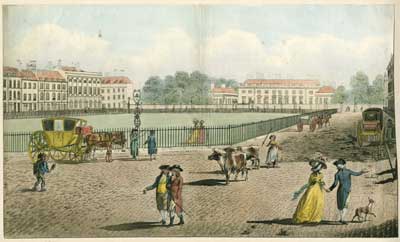
For those of us not privileged to live in Bloomsbury or the Île Saint-Louis, flânerie can take place only in a diluted or symbolic form. I’ve lived inside the limits of a major city only once in my life, for the two years that I spent in a high-rise apartment in Omaha—admittedly not London or Paris, but a city with sidewalks and storefronts enough to scratch the itch. When the weather wasn’t so cold that my eyeballs froze, I’d walk three miles to my job at the university. These were the early days of the iPod, and I’d put my whole music library on shuffle and let the mechanical stream of consciousness paint the now-familiar streets with unexpected colors. My office was in the middle of the building and lit only by fluorescent light. To avoid Seasonal Affective Disorder in the dim Nebraskan winter, I’d sometimes use my lunch break to stroll through the park next to the university and through the charmingly named Happy Hollow, the cozy neighborhood that housed many professors—and the billionaire Warren Buffet, whose unassuming house I passed by on my way in every morning. At night, for lack of a social life, I’d walk through Omaha’s tourist haven, the Old Market, down to Heartland of America Park, whose aerating fountain gave the whole area the faint odor of fish. I’d imagine I was at the seashore, thousands of miles away. At least once, a hypomanic episode kept me up all night and, jittery from smoking cigarettes and staring out the window at the blue square of my neighbor’s television, perpetually glowing, I was driven out into the empty streets. Omaha is pointedly not a city that never sleeps, and it was pleasantly eerie to have those dark streets to myself, except when I shared them with paperboys, garbagemen, and seafood-delivery trucks.
Years later, I took a teaching job at a small college in rural Minnesota, where I took to walking in the early afternoon. The campus wasn’t exactly in the wilderness, though I sometimes walked an uneven and rain-eaten path through copses of trees out to the flat expanse of one of Minnesota’s ten thousand lakes. But it certainly wasn’t in the city, and I felt more like a nature-walker than a flâneur. I tried to learn to recognize the birds by their calls but couldn’t find much of a way into that world. I never made it past the gaggle of Canada geese who congregated at the college’s aerated pond in the summer. As I’d stroll toward the wooden bridge, they’d concernedly waddle away or hiss at me. “Guys,” I once said out loud, “I walk by here every day. When have I ever done anything to you?” I imagined them congregating around me the way wild animals suddenly become tame in the presence of a warmhearted Disney heroine.
I always walked in my teaching clothes: dress shoes and a sports coat and tie, or sometimes a full suit. In part this was a practical decision. What was I going to do—change into workout clothes for a half-hour casual walk? But I enjoyed the gentle eccentricity of it, too. Every so often it became apparent to me that my students were amused by my walking habits, and I wore their amusement proudly. I thought about Freud power-walking through Vienna in that gray suit, and the miles C.S. Lewis walked through Oxfordshire, swaddled in tweed. Wordsworth seems to have spent half the day walking by lakes and worrying that the Industrial Revolution would wipe it all out. I can’t imagine that he wore a full suit on those walks—but I certainly enjoy imagining it.
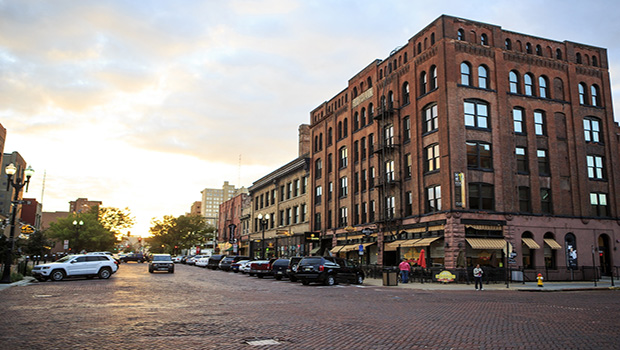
These two sojourns aside, however, I’ve spent my whole life in the suburbs—mostly the suburbs of Atlanta, which must be one of the least ambulatory places in the country. Atlanta is a city of cars, as its well-deserved reputation for gridlock suggests, and its suburbs even more so. Most of the places I’m familiar with cannot be practically walked at all; the idea of walking to, say, the grocery store would, I suspect, strike most Atlantans as absurd, and the total inadequacy of the public-transportation system (along with the omnipotence of the weather) means that almost everyone drives almost everywhere, filling the air, already stifling for half the year, with the squiggly, translucent auras of the internal-combustion engine. Walking in the suburbs thus has a pleasantly and harmlessly countercultural element to it.
The neighborhood I grew up in did not even have sidewalks. Nevertheless, when I was a high-schooler with a great deal of time to kill and not a lot of friends to kill it with, I took a lot of pleasure in walking, mostly in the early evening, to a park a few miles away—not to do anything in particular in the park, but just to turn around and walk back. (I always worried that someone would see me reach the park and then immediately spin around on my heels, as if anyone would care. There’s no escaping self-consciousness for a teenager, and perhaps not for a certain kind of adult, either.) In the summer, I’d head the other direction, toward my church, where I spent most of my free time. I must have arrived there drenched in sweat, though I remember only the world-shaking grace of the sanctuary’s powerful air-conditioner, dispersing the heat from the surface of my grateful body. I didn’t get a driver’s license until I was eighteen, and I wonder if in part the delay was because I didn’t want to give up these walks, born of the idleness of adolescence. It took me almost an hour to get there, and there was always the chance that I’d get hit by a car zooming distractedly through the neighborhood. If my parents worried about that possibility, they never expressed it to me.
I always carried a Discman on these walks, and listened to whatever Christian rock albums I was listening to at the time. Walks are a great time to listen to music, as long as your peripheral vision is good enough not to get hit by a car. We’re surrounded by music, it seems, 24 hours per day, but we rarely actually hear it. There’s not much to see in the suburbs, particularly on the 35th walk through them, so the music comes to us directly, presenting parts we might not have heard elsewhere. Other times it merely blocks out the world and frees us to be alone with our thoughts, another luxury that the modern world rarely affords us.
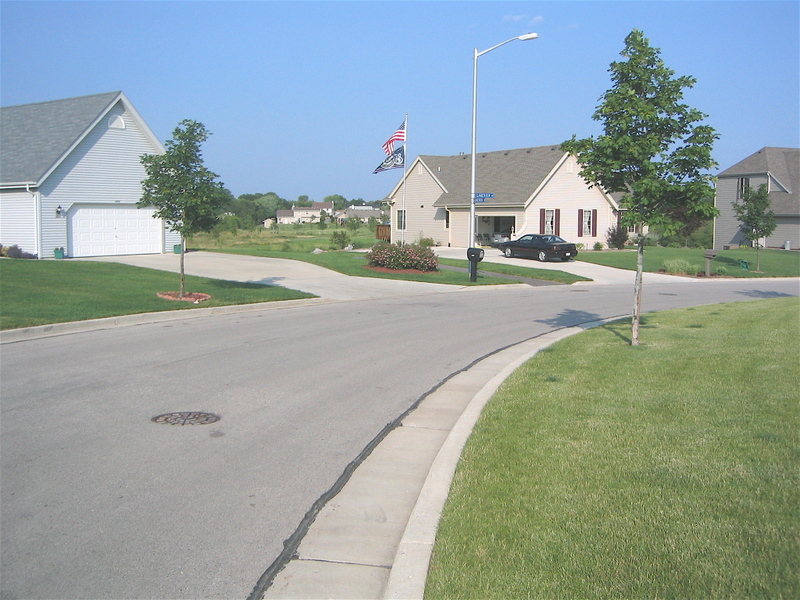
Twenty years later, I find myself in another Atlanta suburb. This one is better designed than the one I grew up in, or at least designed more with walkers in mind: sidewalks line the tangle of streets that wind around one another like a cat’s cradle. I’ve still never seen anyone walk to the grocery store, but on pleasant days there are always walkers dotting the sidewalks. I work at home, which can get a little claustrophobic after a few hours, so I try to walk down to our little park right after lunch.
The suburbs are often a place of derision. Certainly there’s not much that’s cool about them, and their history as a haven for white flight has led culture, both high and pop, to present them as the locus of American conformity and banality. There is some truth in this presentation. But times are changing. As cities grow more appealing to generations, like mine, raised on Sesame Street, white flight is reversing itself into gentrification, and those of us who have been priced out of the city naturally head to the suburbs as consolation. I wonder if, twenty years from now, suburbs won’t have the reputation that cities had in the 1960s and ‘70s: places where, removed from affluence, the real action happens. Part of the power of the city, admittedly, comes from the way that its residents are crammed together into tight spaces; it’s hard to see how the suburbs, much more spread out, are going to offer that advantage (or disadvantage), unless of course enterprising landowners divide McMansions into individual apartments. But the suburbs have historically offered a kind of communal life. The children (and, more ominously, the teenagers) in the neighborhood I grew up in roamed its unlined streets in semi-feral packs, and the whole neighborhood came together into a block party on New Year’s Eve and the Fourth of July.
None of that is true of my current neighborhood, however. The advent of helicopter parenting, the playdate, and a general social incohesion means that I never see children walking through the neighborhood, even though it is almost self-evidently safer than the one I grew up in. The county even has a rule that children under fourth grade must be picked up at the bus stop rather than walking home, even if it’s just a block or two. People are friendly enough, and some of us even know one another’s names—but the preponderance of video doorbells and other surveillance equipment suggests that there’s something we don’t trust in our little paradise. The only large parties are organized not by neighbors but by the faceless abstraction of the Homeowners’ Association, which also ensures that we don’t park too many cars in our driveways and that our houses are painted in complementary colors. It’s not exactly the oppressive conformity of Richard Yates’s Revolutionary Road, but they share some DNA.
Actually, the novel I think about most often is Walker Percy’s The Moviegoer, whose narrator, Binx Bolling, lives in a particularly unimpressive neighborhood in New Orleans, even though he could probably afford the Garden District or the French Quarter:
Except for the banana plants in the patios and the curlicues of iron on the Walgreen drugstore one would never guess it was part of New Orleans. Most of the houses are either old-style California bungalows or new-style Daytona cottages. But this is what I like about it. I can’t stand in the old world atmosphere of the French Quarter or the genteel charm of the Garden District. I lived in the Quarter for two years, but in the end I got tired of Birmingham businessmen smirking around Bourbon Street and the homosexuals and patio connoisseurs on Royal Street.
What Binx likes about this neighborhood, the fictional Gentilly, is its quality of nowhereness. He lives “on Elysian Fields, the main thoroughfare of Faubourg Marigny. Though it was planned to be, like its namesake, the grandest boulevard of the city, something went amiss, and now it runs an undistinguished course from river to lake through shopping centers and blocks of duplexes and bungalows and raised cottages.” There is, to be sure, a certain ironic distance between Percy and Binx in these descriptions. We’re meant to take Binx’s desire for places that are not really places as a symptom of his spiritual malaise. And yet that distance is not as wide as we might think: Percy himself didn’t live in the French Quarter or the Garden District but in the New Orleans suburb of Covington, a town noteworthy not for its beautiful architecture and cultural attractions but for being the hometown of Stephen Stills and the chosen home of Walker Percy and “Pistol Pete” Maravich. It also boasts the world’s largest statue of Ronald Reagan.
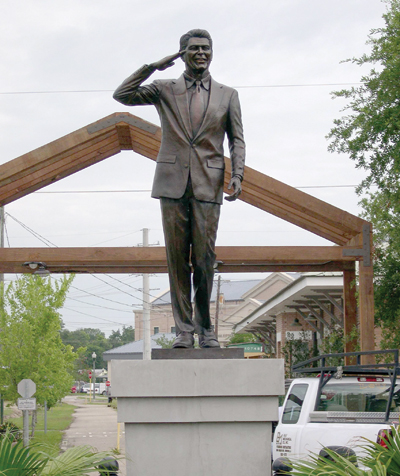
The advantage of living in a “nowhere” suburb like Covington lies precisely in its nowhereness. There’s nothing there that forces itself on the mind of the writer. A genius like Virginia Woolf can live in her imagination even as Bloomsbury presses against her, and of course writers have always found the specifics of big cities to be an inspiration. But the suburbs are a blank slate. When I walk through them, I am left alone with my thoughts, and free to mold them into the shapes that I prefer. The wide lawns become stretches of forest or the glass-filled vacant lots of the city; I look through the windows of the houses and imagine lives I would live, people who I would be, if I lived in them. The fact that there’s not a huge difference among them allows me to construct these alternative histories, if not from whole cloth, then from the pieces of lives I’ve seen in movies, in books, in other places I’ve been. Fantasy can be dangerous—but then my walks don’t last more than half an hour, after which I return to the more or less real world. But it’s a world renovated by my imagination.
I pass other walkers nearly every day, but for the most part they are not suburban flâneurs, in that they seem to have direct and practical goals for hitting the sidewalks. They are being dragged along by dogs, or they are wearing workout clothes. I always step aside and let these purposeful walkers have the sidewalk. My walks are, after all, a kind of stepping aside and letting the suspicious, scowling world step past. Like Baudelaire, I see my walks as mildly but appealingly countercultural, especially since they take place during work hours. Our culture rewards nonstop busyness, to the point that Mike Bloomberg’s advice to people who want to be successful is to take neither lunch nor bathroom breaks. Walking, even for thirty minutes after lunch, refuses this whole value-system. I tell myself and the world that I don’t belong to my work, even if it rents me for eight hours a day. When I cross at a crosswalk, the cars have to wait for me. Just as well—let them, in this land of traffic and gridlock, remember that something survives, in however degraded a form, from the world before the automobile.
Ultimately, what is appealing about walking in the suburbs is our sense of simultaneously fulfilling and violating the essence of the place—because the suburbs, whatever Binx Bolling says about them, do have an essence. They were designed for human living, designed to be the Golden Mean between the crowded, stifling city and the inhospitable wilderness. And yet they have too often been inhuman, an antiseptic, automated habitrail in which the most human parts of its residents are repressed. When we stroll aimlessly through them, we don’t merely restore ourselves: we mystically restore the suburbs to themselves. What could be more human than wasting our time?
- Woolf’s essay is particularly interesting to me because it demonstrates the degree to which walking is usually an occupation for men. The city is a much more dangerous place for women, for reasons that are probably obvious, so most of the literary paeans to it come from a male perspective. And then, as the recent murder of Ahmaud Arbery demonstrates, many public spaces are dangerous for people of color. So there’s a certain amount of privilege required for walking, in the city or in the suburbs. ↑

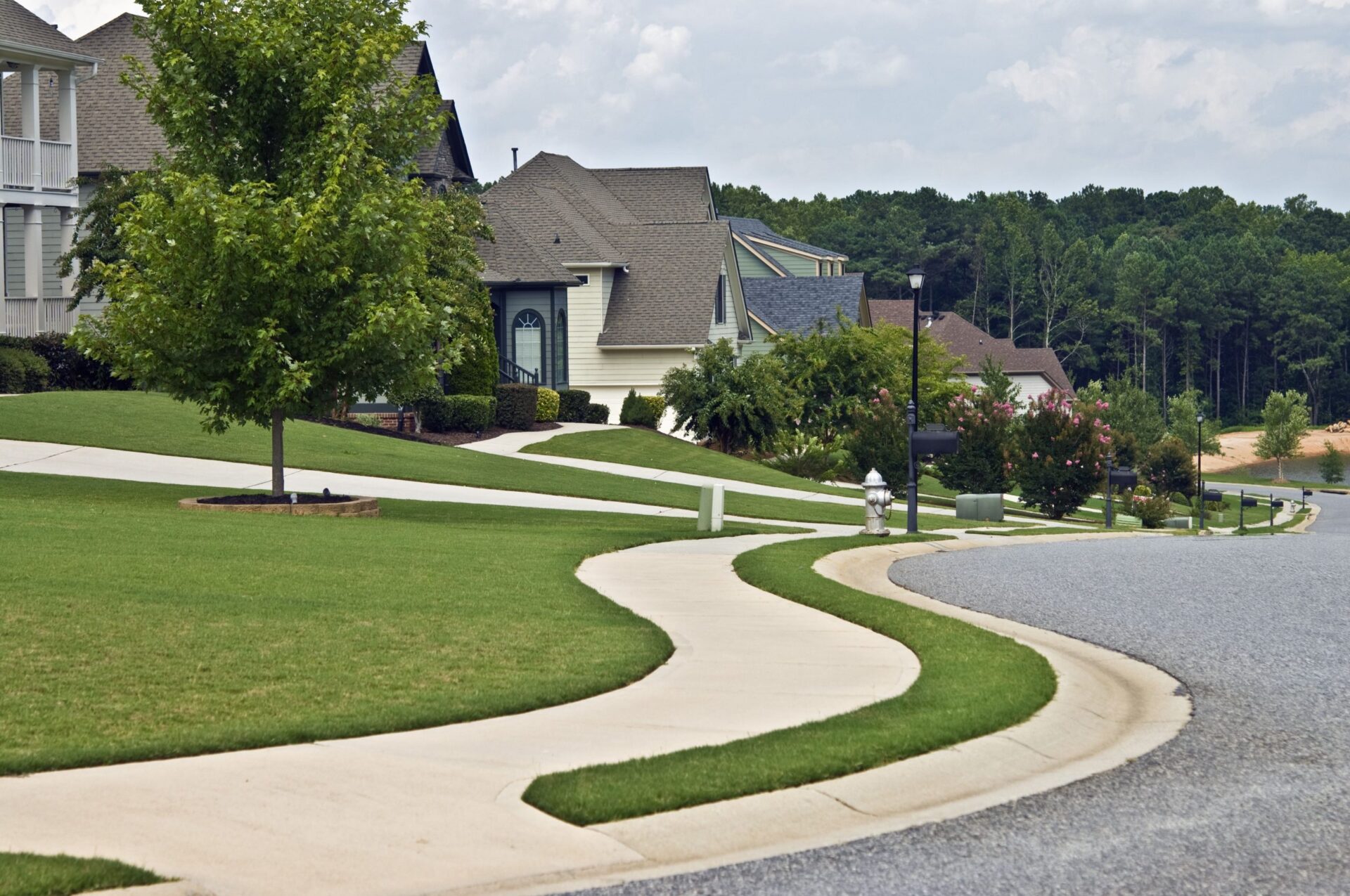


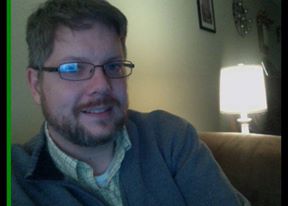



2 comments
Dan Grubbs
Earning my undergraduate degree from the English department of the University of Nebraska at Omaha I am familiar with the haunts of the local surroundings of the campus: Elmwood Park, Dundee, Memorial Park, the grounds of St. Margaret Mary’s Church, and other spaces. I realize these places will only be meaningful to Mr. Farmer. Yet, if I can create one gossamer-linked memory of those places between we two, it is worth the space and time to share.
I walked these places extensively during my years a UNO because I steadfastly refused to purchase a student parking permit which gave no guarantee a place to park on campus. This meant I had to walk maybe a mile or so from where I parked to reach the building where most of my classes were. Evening classes in winter were the best as I had those quiet snowy moments where the noise of busy Dodge St. were muffled and I stood momentarily under the tall coniferous trees easily found in the area. Quiet moments that allowed me to erect a boundary between the hectic nature of my life (job, wife, two children, mortgage) and the world I was about to enter where discussions of Chaucer, Twain, Graham Green, and the Beat poets gloriously took place. This modified flaneurie was my slave for the stresses caused by what took place either before or after. Though, admittedly, the stresses of the classroom were more my own doing than the setting and context. For to this day, some of my fondest memories are discussing A Passage to India with Dr. Mike Skau or listening to Dr. Gregory Sadlek teach us of courtly love. I write all this not just for Mr. Farmer’s amusement, but to point out that the flaneurie is as much colored by the places on either end of the flaneurie as it is by the place where it transpires. At least this is my observation from many dark and silent nights walking to and from class on a cold Nebraska night leaving tracks in the snow in a place that is dear to me still.
Russell Arben Fox
I’m a few days late in getting to this, Michial, but I want to say it’s charming, a wonderfully reflective sewing of a silk purse of flâneurian casualness and insight out of the sow’s ear of, heaven protect us, the suburbs of Atlanta. (As John Denver once said of Toledo, years ago, while on a conference, I spent a week there one day.) My oldest daughter can fully relate to your description of your high school ambulatory habits, what with “walking, mostly in the early evening, to a park a few miles away–not to do anything in particular in the park, but just to turn around and walk back.” Now sheltering with us at home during the pandemic, she has returned to her old habits, and I enjoy strolling through our old, partly run-down, inner-ring suburban neighborhood with her. Anyway, well done, sir.
Comments are closed.